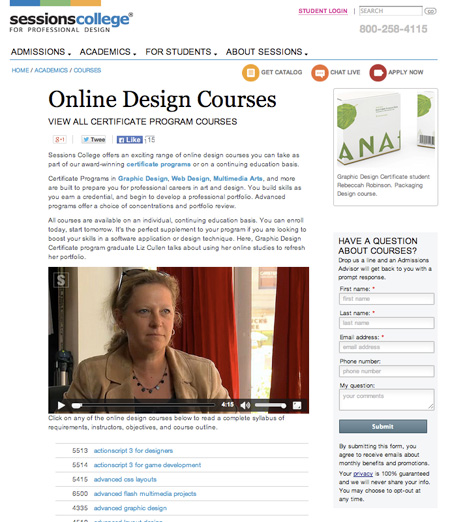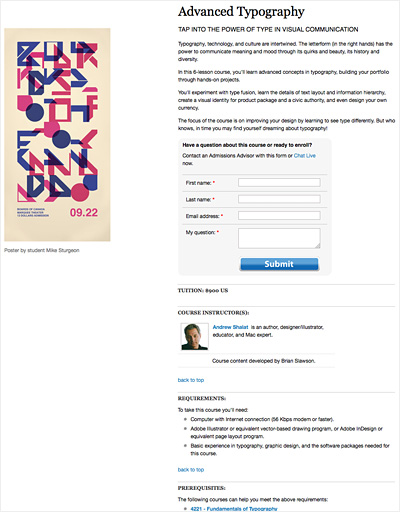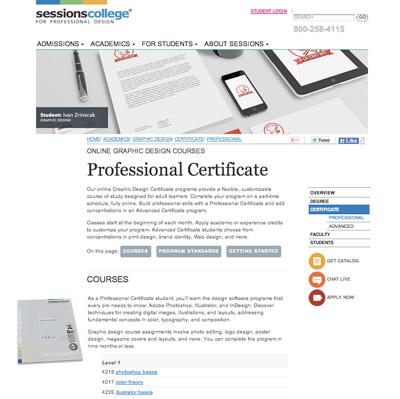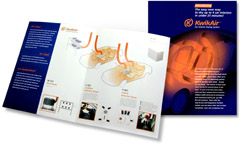Founding
Story
At
the beginning of this class I'd like to share with you the story of
how Sessions was conceived.
Sessions was founded in New York City
in 1997 by a
team of educators and design professionals from three continents. The
objective: To
create a brand new design school from the ground up, eliminating the
obstacles of the classroom and taking advantage of the benefits of
the
new medium.
The
vision for the school was simple: if the field of visual communication
was increasingly converging on the computer, then students should
be able
to study design
on the computer too.
Via
the Internet, students should be able to attend an actual school of
design (comparable to Parsons or SVA, for example) that
offers a range of excellent courses, an all-star faculty, and the opportunity
to learn through critique and feedback.
This
concept was called "using the medium to teach the medium."
|
|
Student
projects in graphic design, fine art, and Web design. Click to enlarge. |
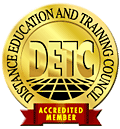 Sessions
opened its virtual doors in 1998 with just three courses in Photoshop,
graphic design, and Web design. During
the next five years the school grew unhindered by online learning skeptics
and the
rise and fall of dot-coms. Along
the way, Sessions was nationally
accredited by the DETC (Distance Education and Training Council) and
became the first online school to be licensed by the New York State
Education department.
Sessions
opened its virtual doors in 1998 with just three courses in Photoshop,
graphic design, and Web design. During
the next five years the school grew unhindered by online learning skeptics
and the
rise and fall of dot-coms. Along
the way, Sessions was nationally
accredited by the DETC (Distance Education and Training Council) and
became the first online school to be licensed by the New York State
Education department.
Since that time, Sessions has also earned regional accreditation at the certificate level by the Middle States Commission on Secondary Schools and moved its main campus to Tempe, Arizona. Sessions College is currently licensed by the Arizona State Board for Private Postsecondary Education. Learn more about accreditation and approvals here.
Today,
Sessions College for Professional Design is a fully accredited online institution offering more than
80 courses, and a range of certificate programs and Associate's degree programs. It has served tens of thousands of courses to students in over 100 countries.
And just as impressive, it has an all-star faculty of more than 30 industry-leading
artists, educators, and designers. And soon this will include you!
Our school mission:
To prepare art and design professionals by providing the highest quality of online arts education. The school prepares students for careers in art and design by providing a thorough training in the technical, creative, and critical thinking skills required for professional practice.
Ambitious
goals, aren't they? In the rest of this lesson, we'll examine how we
set out to deliver them.
Let's begin by examining our approach to online
instruction...
Our
Learning Model
What's
Sessions's approach to online learning?
We deliver educational experiences that are asynchronous,
project-based, and instructor-led. Kind of a mouthful, but each of these words is critical to understanding
why students enroll in courses at Sessions,
and what's important to them after they enroll, too.
Let's
look at the three core principles of our online learning model:
Asynchronous
Traditional
schools have rigid class schedules—class is every Tuesday night,
and if you miss a class, you'll probably have to catch up, or maybe
show up Sunday to study with some other instructor than that nice Mr.
Morgenthal.
At
Sessions, classes are asynchronous: classes
are always available, 24/7. Students can log in
at any time to study, complete exercises, and interact
with an online community of design students and instructors. Taking
courses on their own schedule, students can structure their education
around the commitments of family, work, or lifestyle.
 |
Early
ad campaign. Billboard that appeared in the East Village,
New York City, featuring the benefits of "anytime, anywhere" learning. |
However, there are important milestones that students must meet as they work through their classes. Students are expected to complete a lesson a week in a certificate course and have a set window of time in which to complete a full course. Degree students have an even tighter schedule involving participation and project due dates.
Within these guidelines, students can study when they need to. But it is important for you to be responsive to them, their unique schedules, and general guidelines for course completion.
It's
important to note that while the student experience is asynchronous,
instruction is not. Our service
guarantee to students is that they can log in to study at any time,
and expect an instructor response within 1-2 business days. Remember: business days means Monday through Friday. Even online, you get your weekends!
That's
a flexible timescale
for a faculty that consists of design professionals, and a faster
response rate than a student might expect in a traditional school for an assignment grade and critique. However, when dealing with quick questions or obstacles in a course, students would appreciate even faster response whenever possible.
Project-Based
 |
|
Project-based design work in Advertising Design |
Traditional
schools are often (though not always) academic and theoretical in orientation.
Students are asked to absorb a mass of information and prove they've
mastered it through multiple choice examinations. One
of our frustrations with traditional education was that it rarely prepared
us for real-world challenges.
Sessions
aims to build a high quality design education through a curriculum
that's primarily project-based.
Design
briefs establish the creative parameters of each exercise—just as
a client or employer would. Students might find themselves designing
a company logo, building a Web site, or shooting an interview video. Each project gives students the opportunity to learn and apply
software and design skills "on the job."
There are essentially four types of courses a student might experience:
 |
|
 |
| |
-
Intro
course. Get a conceptual, theoretical foundation in a field.
-
Software
course. Learn design software through hands-on projects.
-
Core
course. Learn design principles by completing a series of
intermediate-level projects.
-
Advanced
course. Learn a challenging or specialized design discipline and build portfolio pieces.
|
|
 |
|
 |
Instructor-led
The
third core principle of Sessions is something that's just as important
here as at a traditional school: our courses are instructor-led. Unlike books or online tutorials, our classes
offer the tremendous benefit of critique and feedback from a professional
designer.
Course
exercises are designed to be step-by-step and completed with a minimum
of questions or learning obstacles. Student exercises are posted in
a learning environment for the instructor and other students to review.
This allows instructors to focus primarily on improving
the quality of a student's design and answering
any technical questions the student may have.
 |
|
Sessions
banners feature stylized images of "instructors
at work." |
It's like having an art director over your shoulder, without
the attitude! And the instructor is not the only source of wisdom. Interaction
with and feedback from other students affords multiple opportunities
to learn and improve. Imagine
sharing ideas and influences with students from over 100 countries.
Another important concept
for teaching at Sessions is to understand the specific benefits of
teaching online versus traditional teaching. We can explore this
with a story from the "real world."
A Story About Traditional Education
 The setup: Imagine
you're an adult learner seeking to develop graphic design skills
through continuing education. September rolls around, and you're
leafing through the local college's course catalog.
The setup: Imagine
you're an adult learner seeking to develop graphic design skills
through continuing education. September rolls around, and you're
leafing through the local college's course catalog.
They're offering a super-duper
course in Introductory Photoshop that meets every Tuesday at 7:00pm
with that nice Mr. Morgenthal. It's kind of pricey—10 class lessons, two credits, for $2,500—but
the tempting prospect of finally mastering Photoshop overcomes your
resistance.
In your first class, Mr. Morgenthal seems very nice, and knowledgeable too, as he whizzes through a discussion of his favorite Photoshop features and tricks. After an hour's razzle-dazzle, you're all pumped to weave some Photoshop magic, as the hands-on component starts. But you're struggling just a little with the unfamiliar computer and platform in the computer lab, and squinting at the class handout isn't helping any.
All too soon, it's time to go, and everyone grabs their coats while simultaneously trying to write down the homework assignment, which Mr. Morgenthal is dictating while simultaneously turning off the classroom lights.
You try to ask him about the Lasso tool en route to the
parking lot, but as he brightly assures you, there will be plenty of time
to talk about that next week.
Benefits of Online Learning
OK, perhaps that story wasn't the fairest representation,
but it does illustrate some of the disadvantages of the traditional
classroom that online education seeks to address. Understanding the benefits of online learning is the first step toward to developing an effective teaching approach.
Let's consider the student's expectations. Students who enroll in an online course have different learning aspirations than do traditional classroom students. Keeping these in mind can help you understand how your instructor critique fits into the bigger picture.
If
you're a student, studying online at Sessions affords you the ability
to:
 |
|
 |
| |
-
Learn on your
own schedule. Can't make it across town at 7pm every Tuesday? Study or complete exercises at home, when time permits, as long as you complete one lesson a week and finish your course in the required window.
-
Learn on your
own computer. Study
with the exact tools and on the exact platform you're
familiar with, and which you'll do future work on.
-
Get high quality
course content.
No more dependence on 8.5-by-11 class handouts. Each
class is a professional-quality educational product
that students can save or print out and keep. Detailed text, images, screenshots, multimedia pieces, and hands-on walkthroughs provide students with many ways to learn.
-
Ask questions
when appropriate. When you hit a learning block, just ask your instructor. This is great if you have learning challenges or a fear of classroom learning.
-
Get rapid feedback. All projects are assessed within 1-2 business days. Ideally, other questions are answered even sooner.
-
Get personalized
feedback. When
you submit an assignment, your instructor will take
time to individually evaluate it.
-
Learn from expert
instructors.
You gain access to industry-leading artists, designers,
and educators, no matter where you live.
-
Learn without
breaking the bank. You can train at a fraction of the cost of traditional programs or individual courses.
-
Get access to
education you might not get any other way. Cut
through accessibility barriers! Sessions is proud to
have taught students who are homebound, busy moms,
geographically remote, on government programs, military service members, disabled,
and many more.
|
|
 |
|
 |
This is the value proposition for enrolling at Sessions.
It's a checklist of why students choose an online course over traditional course options.
This is important to you because it tells you a lot about where to best focus your instructional powers and how to define your limits.
There's no need to feel
abashed that students aren't able to witness your dazzling repartee
in person. If you're able to provide high-quality critique and feedback
within 1-2 business days, your students will graduate on time, and have a great learning
experience for all the reasons listed above.


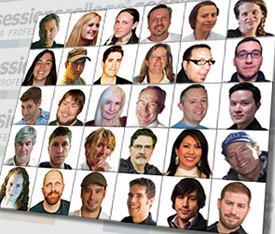

 Sessions
opened its virtual doors in 1998 with just three courses in Photoshop,
graphic design, and Web design. During
the next five years the school grew unhindered by online learning skeptics
and the
rise and fall of dot-coms. Along
the way, Sessions was nationally
accredited by the DETC (Distance Education and Training Council) and
became the first online school to be licensed by the New York State
Education department.
Sessions
opened its virtual doors in 1998 with just three courses in Photoshop,
graphic design, and Web design. During
the next five years the school grew unhindered by online learning skeptics
and the
rise and fall of dot-coms. Along
the way, Sessions was nationally
accredited by the DETC (Distance Education and Training Council) and
became the first online school to be licensed by the New York State
Education department. 


 The setup: Imagine
you're an adult learner seeking to develop graphic design skills
through continuing education. September rolls around, and you're
leafing through the local college's course catalog.
The setup: Imagine
you're an adult learner seeking to develop graphic design skills
through continuing education. September rolls around, and you're
leafing through the local college's course catalog. 